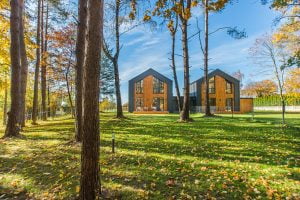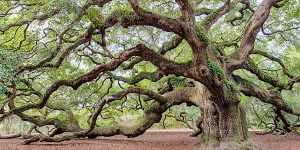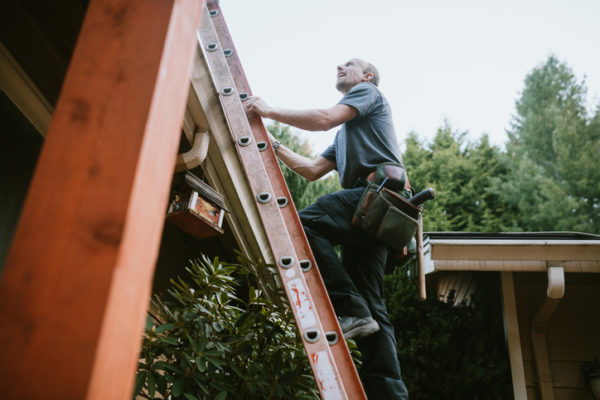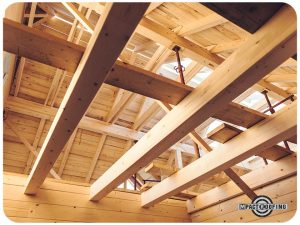Protecting Your Property from Fallen Trees and Leaves
Go Back To Previous PageLast year, major weather events in the United States, from nor’easters to tropical storms, brought heavy snow, strong winds, and downpours of rain. These caused considerable damage to trees in New York and the surrounding areas. NYC is home to over 5 million trees on public and private property. While enhancing gardens and streetscapes can also cause considerable damage to properties. This is if they are not properly maintained. Even in good weather, Fallen Trees, branches, and leaves left to gather in gutters can damage any roof. Pruning trees in your yard, promptly reporting damaged street trees, and regularly removing dead leaves can help protect your property from damage. You can avoid potentially hazardous situations, particularly during bad weat her.
her.
Your neighbor’s tree fell on your property?
Have you ever wondered if a tree falling in the woods makes a sound if no one hears it? While that remains a mystery, knowing who is accountable if your neighbor’s tree falls on your property is essential.
If a tree falls, the property owner where it landed is usually responsible for its removal and any resulting damage costs, regardless of tree ownership.
This can be an exception if there is prior notice that the tree is damaged or diseased. In such cases, the insurance carrier may investigate and determine that the tree owner should have been aware of the issue and placed responsibility on them.
Suppose my tree, which is in good health, falls on your property or yard during a windstorm. In that case, you will be responsible for paying for any damages it causes and the cost of removing the tree. Your personal insurance policy should cover the cost of tree removal. However, if it can be proven that the tree was damaged or diseased before it fell, then I will be responsible for any damages and the removal cost.
If a tree falls without causing any damage, removal is probably unnecessary.
Safely Cleaning Gutters from Fallen Trees
While fall foliage is a spectacular sight in New York, once the leaves have dropped, they can present problems on the ground and in your gutters. Dead and decaying leaves can block pipes, stopping water from draining correctly and pushing it under shingles. They damage the roof and cause dampness to internal walls.
The cold winters in New York also quickly freeze wet leaves left in gutters. As the ice water expands, gutters can crack and warp.
Cleaning leaves from drains and pipes remains hazardous. Professional gutter cleaners will safely remove leaves, sticks, and other debris. Cleaning the gutters at least twice yearly in autumn and spring will prevent them from clogging up, which will prevent structural damage to your property.
Removing Yard Waste
Leaves can also cause problems if left to rot on the ground. You can remove them appropriately and dispose of them before winter. Piles of leaves in your yard or closer to your property’s exterior walls can encourage mold growth and attract pests such as mice and rats.
Clearing fall leaves outside your property is voluntary, but you must sweep them away if they obstruct pedestrians. After you’ve cleared up, you can collect leaves by calling the Department of Sanitation and scheduling regular trash collection. They will do it if labeled as yard waste and placed in suitable bags and containers.
Size Up Large Branches
When tree branches grow too long and overhang your roof, they can become a hazard. However, consulting with an arborist can help determine if there is any immediate danger. The plan may involve reducing the length of a branch without removing it, installing cables for support between departments, or finding a way to prevent large limbs from falling.
Inspect After Every Storm
Andersen recommends checking your trees for damage after any significant wind event, heavy snow, or ice. Look for broken or bent branches and debris in the tree. If you spot a small damaged unit that you can access easily, you may attempt to remove it yourself.
However, if a large branch is damaged or you need to climb a ladder to reach the tree, Andersen suggests calling an expert. Otherwise, you could cause further damage to the tree or get injured. As Andersen mentions, predicting how something stuck in a tree will fall is impossible.
Plant Strategically
If planting a tree is in your plans, making wise choices is essential to avoid future issues. The first step is to understand the size of the tree’s canopy – the breadth of its leaves and branches – once it has matured.
To avoid branches, mildew, and pests from reaching your roof, it’s best to plant the tree further away from your home and other structures. This also helps prevent damage to your home’s foundation from the tree’s roots.
Maintaining Trees
In a built-up city, the trees in your yard and lining your street look beautiful. They can help manage stormwater, remove pollution, and attract birds. However, they can also cause considerable damage if they are poorly maintained. Regularly pruning your trees’ dead, diseased, and torn branches will prevent them from falling unexpectedly.
attract birds. However, they can also cause considerable damage if they are poorly maintained. Regularly pruning your trees’ dead, diseased, and torn branches will prevent them from falling unexpectedly.
You can also ask the Parks Department to deal with any problems with trees in your neighborhood. They will accept requests to prune dead limbs or cut back trees brushing against your property’s exterior walls.
While trees enhance the streets, parks, and yards of New York, damaged branches, fallen trees, and leaves can also present a hazard. You can minimize potential problems by regularly pruning trees, clearing drainage systems, and sweeping debris.



